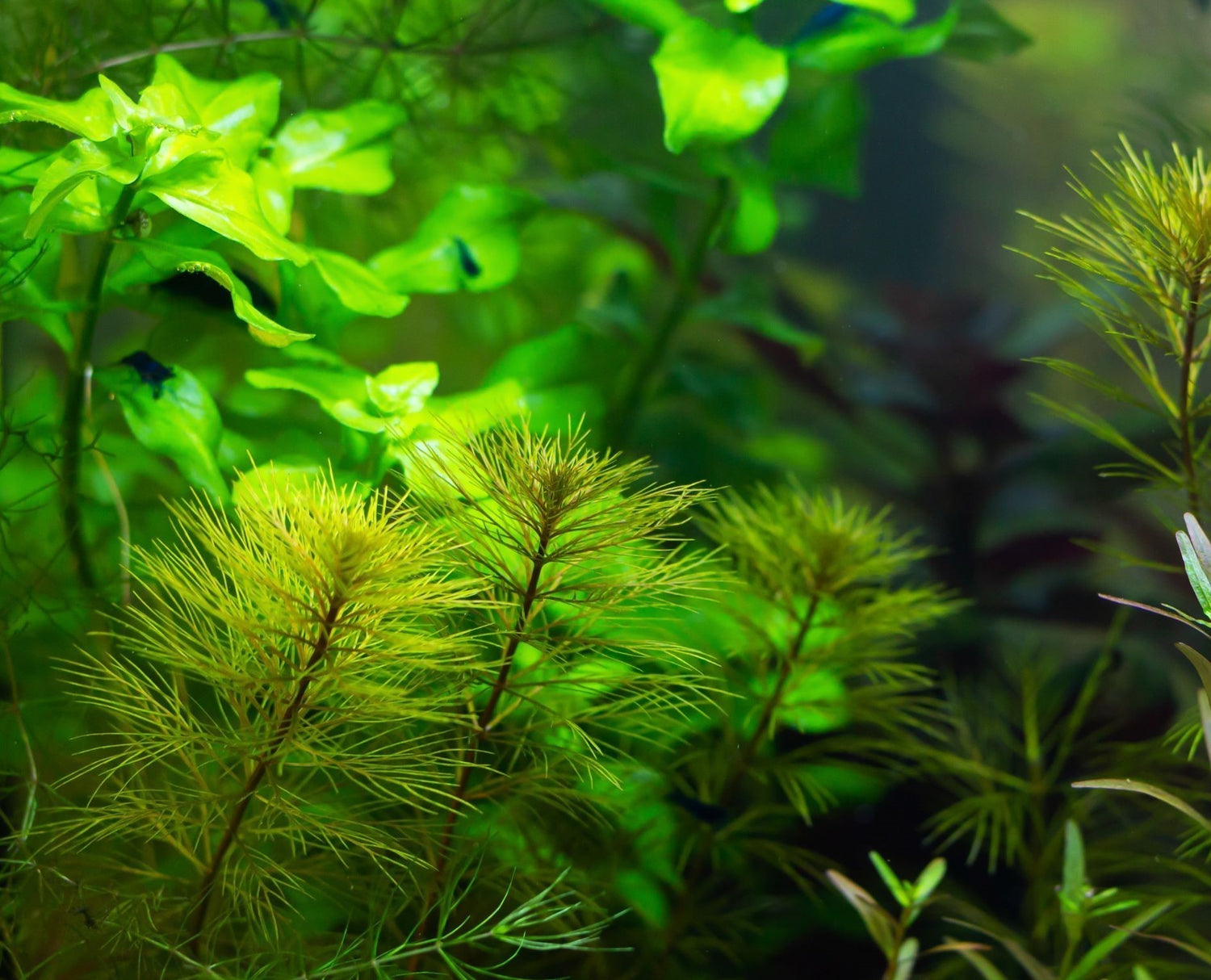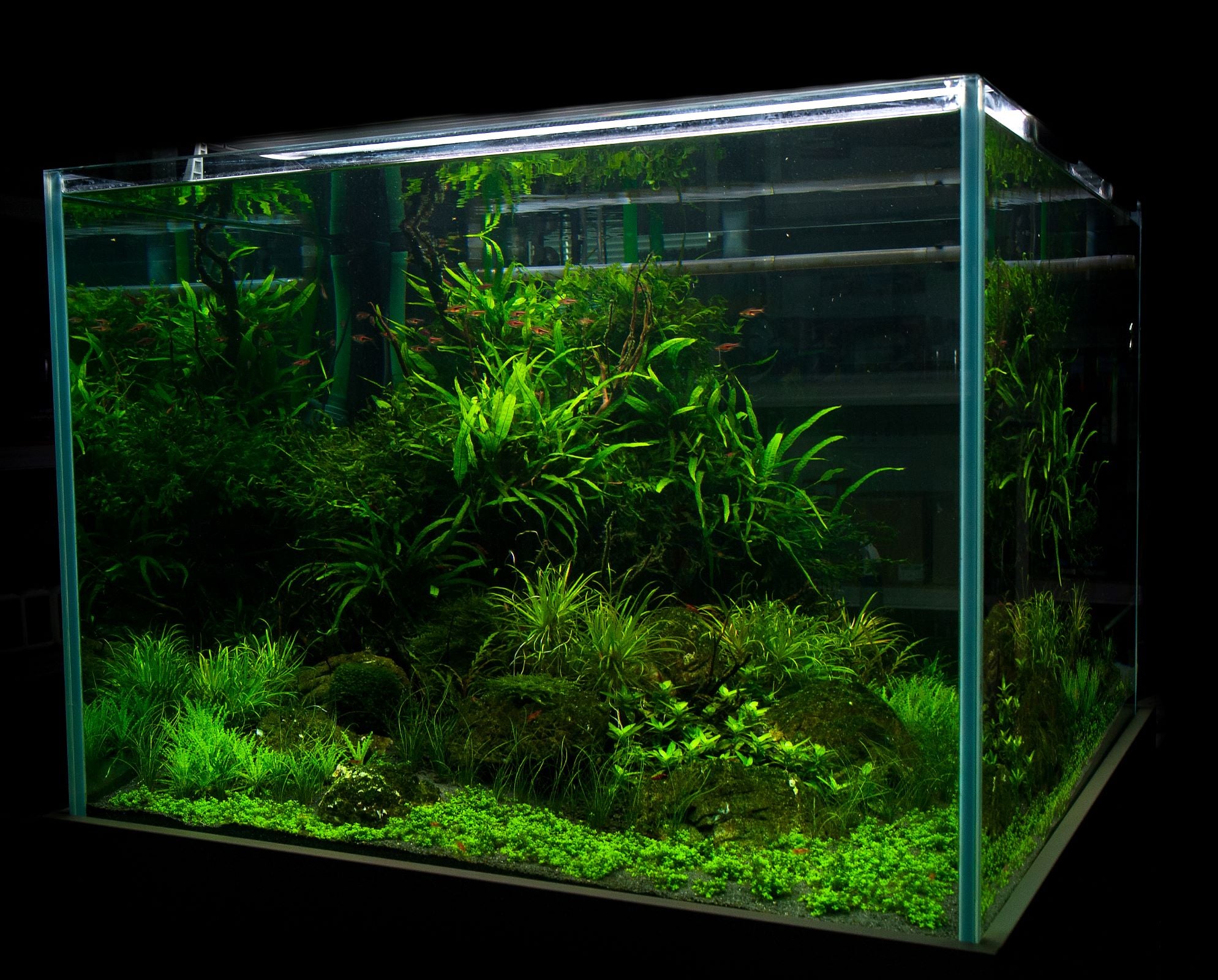Don't panic!
It is worth noting that every aquarium has some algae in it to some degree, which is completely normal for any fish tank. Algae will always form on hardscape in bright areas, although in a healthy balanced planted tank the algae should not be very noticeable. When algae starts to cover your plants and becomes noticeable it can distract from the overall look of the aquarium. It is best to act as quickly as possible when you first notice algae creeping in to keep your planted tank looking its best. Always aim to find the cause of the algae and aim to fix the issue. Algae eating livestock are not always the best option to jump to and in some cases, this may make the problem worse.
Tips to dealing with algae growing in your new aquascape or planted tank
If your planted tank is new, it is important to monitor algae closely during the first few weeks as the cycling process causes ammonia and nitrite to spike which can prompt an algae bloom. It may be worth reducing the light intensity and duration if algae starts to grow rapidly. Planting heavily and covering around 80% percent of the aquarium with live plants will reduce the chances of algae taking over a newly setup aquascape as live plants compete with the algae for nutrients. Lastly if you new aquascape has developed brown looking algae in the first few weeks or months then this is most likely to be diatoms. Diatoms are different to your usual green algae; they consume silicate released by rock and gravel in your new setup. Diatoms can scare a lot of new hobbyists but having a diatoms bloom in a new setup is completely normal. Diatoms can look ugly, they can even start to cover plants, if it gets especially bad then water changes can help but ultimately diatoms will pass in time, this may take a few weeks. Once the silicates have been used up the diatoms will die off. Once diatoms have passed this is when normal algae will start to take hold in your aquarium.
Testing is key
Regular testing will help you determine levels of ammonia, nitrite, nitrate and phosphate, all of which can cause excess algae growth if these levels become raised. Generally, in an established aquarium high nitrate and phosphate levels are your main concern and large water changes are the best way to reduce these levels if they become raised. Once the water parameters are back on track it is worth finding the root cause of the issue. Ask yourself a few questions; Is your filter working? Did you miss a water change? Are the lights turning on and off correctly? Have you started feeding more? Once this question is answered you can then avoid this happening in the future.
Stocking levels are an important factor
Excess food and fish waste can raise levels of nitrate over time which can promote algae growth. Make sure you do not over stock your aquarium with too many fish. In fact, under stocking your aquarium will most likely lead to better long term results. Remember if your aquarium is lacking nitrate, you can always add a liquid fertiliser. We recommend using a liquid fertiliser in most planted tanks.
Quarantine your fish tank
Although we do not want to keep you awake at night, some forms of algae can be transferred from tank to tank. Unlike most common algae strains such as green hair and green spot algae which regularly grow in almost every aquarium. Certain types of algae such as Black Beard Algae (BBA) are introduced into an aquarium via microscopic spores, for this reason be careful when adding in plants, equipment and tools which have been in other aquariums. Plants grown invitro are always a good idea as these are guaranteed to not bring algae into your aquarium. Over the last few years we have noticed a new algae taking hold in the fishkeeping hobby in the UK, a freshwater red coralline algae. You may not have yet seen this before as this calcareous red algae is rare and not much is known about it. This algae looks like a semi translucent red disc growing on the glass and other hardscape materials. It is very similar in form to the usual coralline algae you see in saltwater aquariums although this freshwater form is red. It appears to be a recent discovery in the hobby but we suspect it spreads in the same way as BBA. This bright red coralline algae can be seen in some freshwater rivers on rocks here in the UK, so it is likely that this is how the algae was first introduced into the hobby.
How to remove BBA and red coralline algae
Like BBA this red coralline algae is very tough to remove, carefully using a blade can remove these types of algae from smooth surfaces but it can be harder remove from rough surfaces. There are various techniques hobbyists have tried to remove these types of algae but some are quite harsh and require a lot of work over a period of weeks. Some people also suggest a prolonged blackout which can stunt plant growth. Most hobbyists learn to deal with a small amount of these stubborn algae types being present in their aquarium. It is perhaps worth putting some measures in place to reduce the growth of these types of algae. If you are battling with these stubborn forms of algae it is worth checking forums for the methods suggested for dealing BBA and red coralline algae and choosing the techniques which suites you. It is worth noting that some aquarists enjoy the look of algae and use it in their aquascape.
Prevent algae before it takes over
Lastly, it is good practice to have a regular maintenance plan in place which involves carrying out a water change every week or every other week depending on your setup. A high energy aquascape with fast growing plants and CO2 will require more regular maintenance than a low energy planted tank with slower growing plants. Regular maintenance like this will help keep algae at bay in the long term.
By Alasdair McPhail



Leave a comment
All comments are moderated before being published.
This site is protected by hCaptcha and the hCaptcha Privacy Policy and Terms of Service apply.